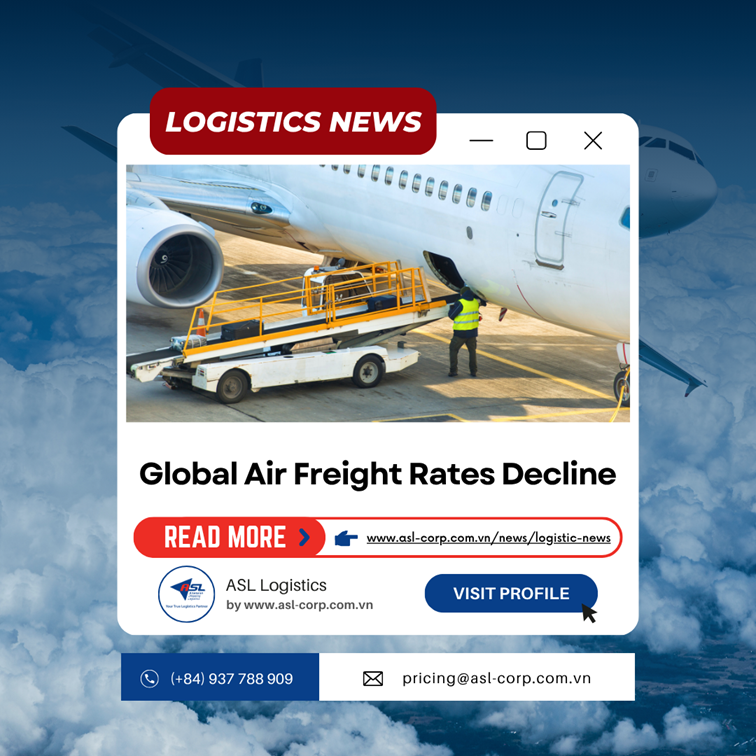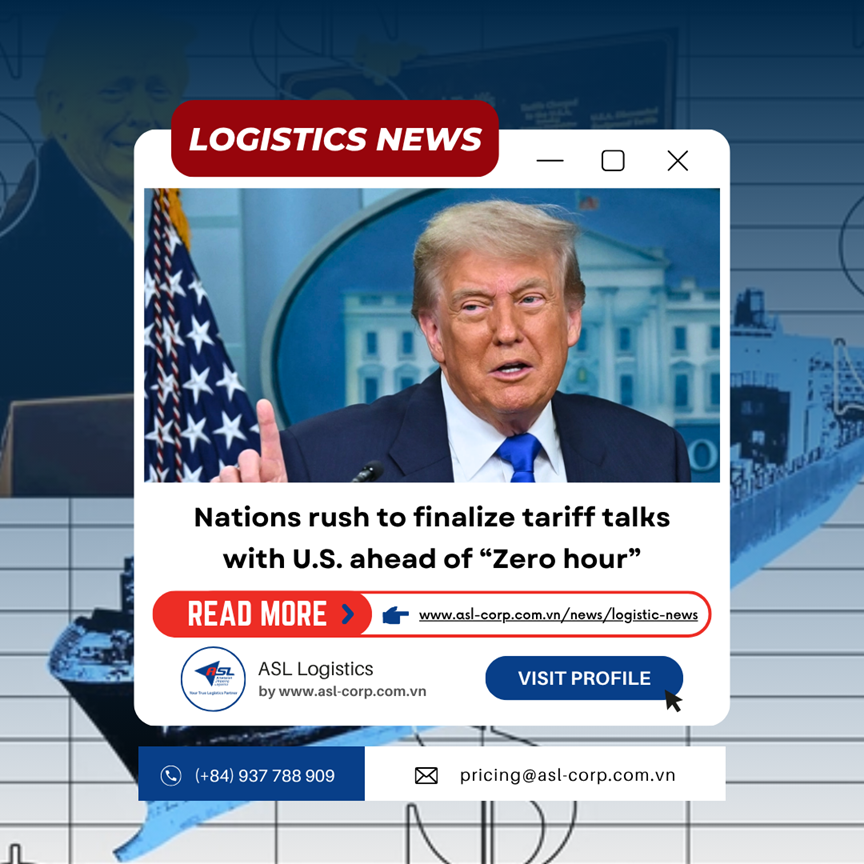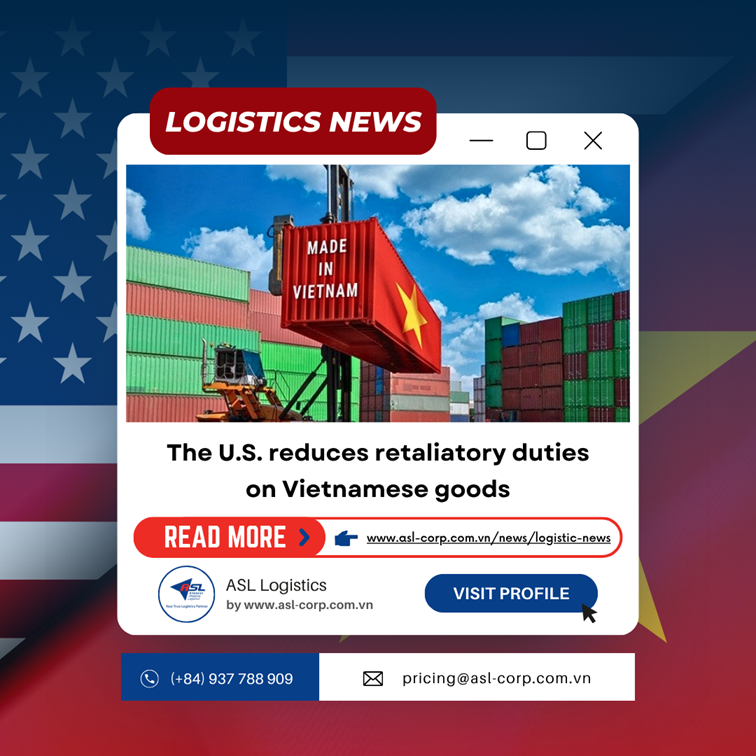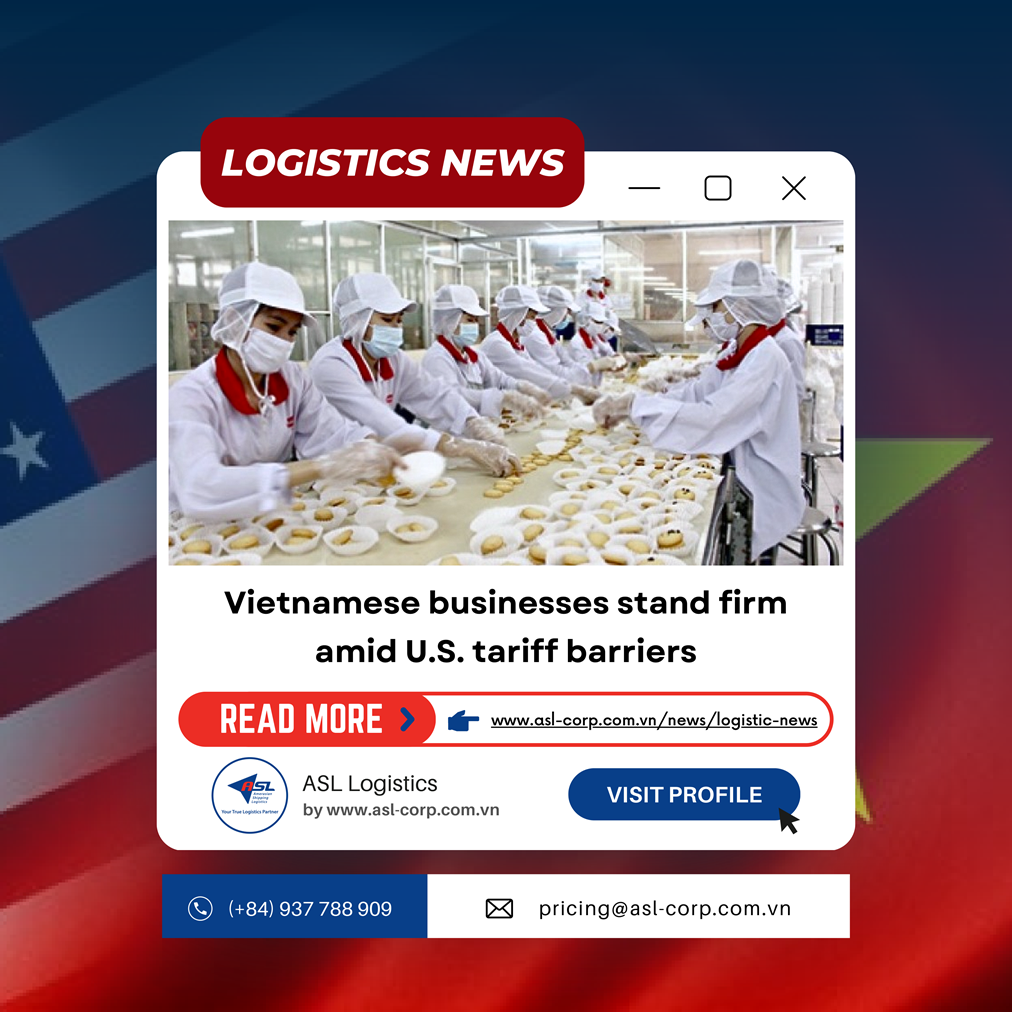Logistic News
6 SOLUTIONS TO PROMOTE IMPORT AND EXPORT IN THE CONTEXT OF INCREASING SEA FREIGHT RATES
27 July 2024
Increasing shipping rates, local congestion at some ports in Asia, and the lack of empty containers have affected import and export activities. Therefore, the Ministry of Industry and Trade has requested industry associations, import and export enterprises, and logistics enterprises to implement solutions to promote import and export in the coming time...
.jpg)
Recently, the increase in sea freight rates, local congestion at some ports in Asia, and lack of empty containers have affected import and export activities.
Therefore, the Ministry of Industry and Trade has just issued Official Letter No. 5178/BCT-XNK dated July 19, 2024 to the Import and Export Industry Associations; Logistics Associations; Vietnam Shipowners Association; Vietnam Shipowners Association; Vietnam Association of Maritime Agents, Brokers and Services on solutions to promote import and export in the context of high sea freight rates.
First, coordination between import and export enterprises and logistics service enterprises.
The Ministry of Industry and Trade recommends that import-export industry associations need to work with logistics associations, the Vietnam Shipowners Association, the Vietnam Shipowners Association, and the Vietnam Association of Maritime Agents, Brokers and Services to improve capacity, gather member businesses to build production and business plans, transportation plans, and import-export plans. This is the basis for signing long-term contracts with shipping lines, minimizing the impact of freight rates and surcharges in the current period of complex and unpredictable developments in the international market.
Second, cargo flow and alternative routes.
According to the Ministry of Industry and Trade, in addition to the current sea route, import-export enterprises with Europe can consider alternative routes, including combined multimodal transport routes, going by sea to ports in the Middle East, then by air, rail or road to Europe.
Third, increase the use of incentives from free trade agreements (FTAs).
Import-export industry associations coordinate with the Ministry of Industry and Trade, the Vietnam Chamber of Commerce and Industry (VCCI) and relevant agencies to increase dissemination to import-export enterprises about the regulations of FTAs to facilitate trade and increase the rate of taking advantage of incentives from these agreements.
Fourth, resolving backlog of import-export goods.
Accordingly, import-export enterprises coordinate with customs agencies and port operators to speed up the processing of backlog of goods at ports, contributing to promoting the flow of goods and improving the capacity of handling goods at ports.
Fifth, supporting training and improving the capacity of negotiating sales contracts and insurance contracts for small and medium-sized enterprises.
Industry associations coordinate with VCCI to increase propaganda and improve the capacity of small and medium-sized import-export enterprises in negotiating and signing foreign trade sales contracts and insurance contracts to protect enterprises from risks and losses when incidents occur. Especially for sea cargo passing through routes with high risk levels.
Sixth, develop prevention and quick response plans.
Import-export associations and enterprises proactively develop prevention and response plans to minimize risks, risks, and losses from similar complex and unpredictable incidents in the future.

Head Office
ASL Hồ Chí Minh
Số 31/34A Ung Văn Khiêm, Phường Thạnh Mỹ Tây, TP. Hồ Chí Minh, Việt Nam
 Công Ty Cổ Phần Giao Nhận Vận Tải Mỹ Á
Công Ty Cổ Phần Giao Nhận Vận Tải Mỹ Á
 (+84)28 3512 9759
(+84)28 3512 9759
 (+84)28 3512 9758
(+84)28 3512 9758
 pricing@asl-corp.com.vn
pricing@asl-corp.com.vn
 mdirector@asl-corp.com.vn
mdirector@asl-corp.com.vn
 www.asl-corp.com.vn
www.asl-corp.com.vn
LOGISTICS SERVICES









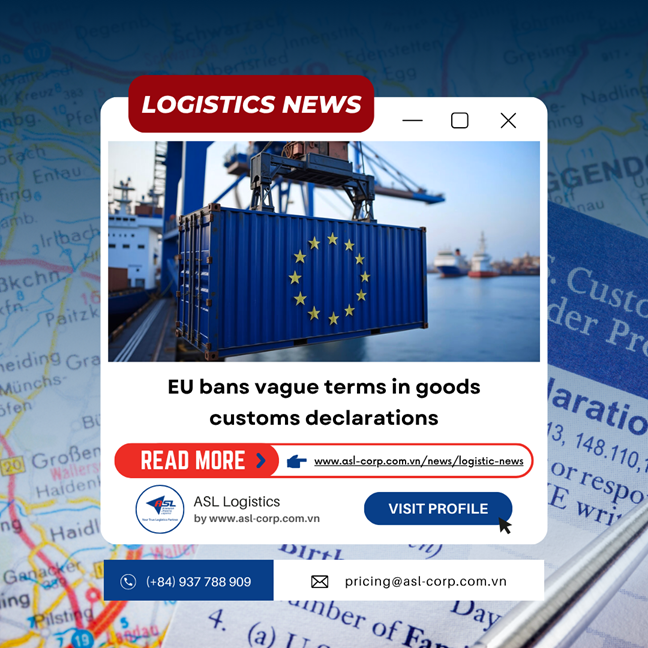
.png)
.png)

.png)

